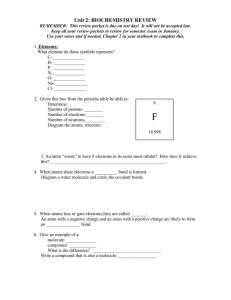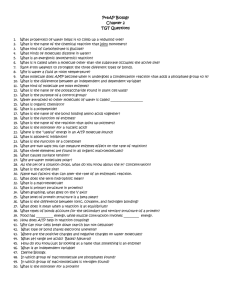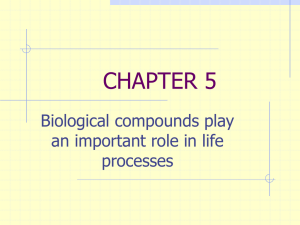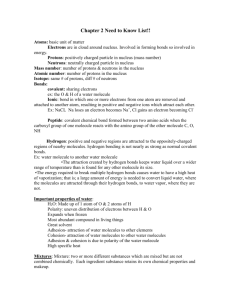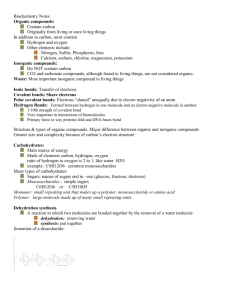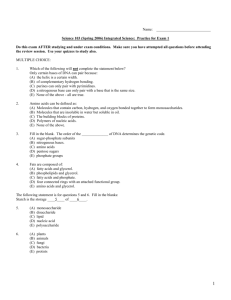Unit 3 Vocabulary
advertisement
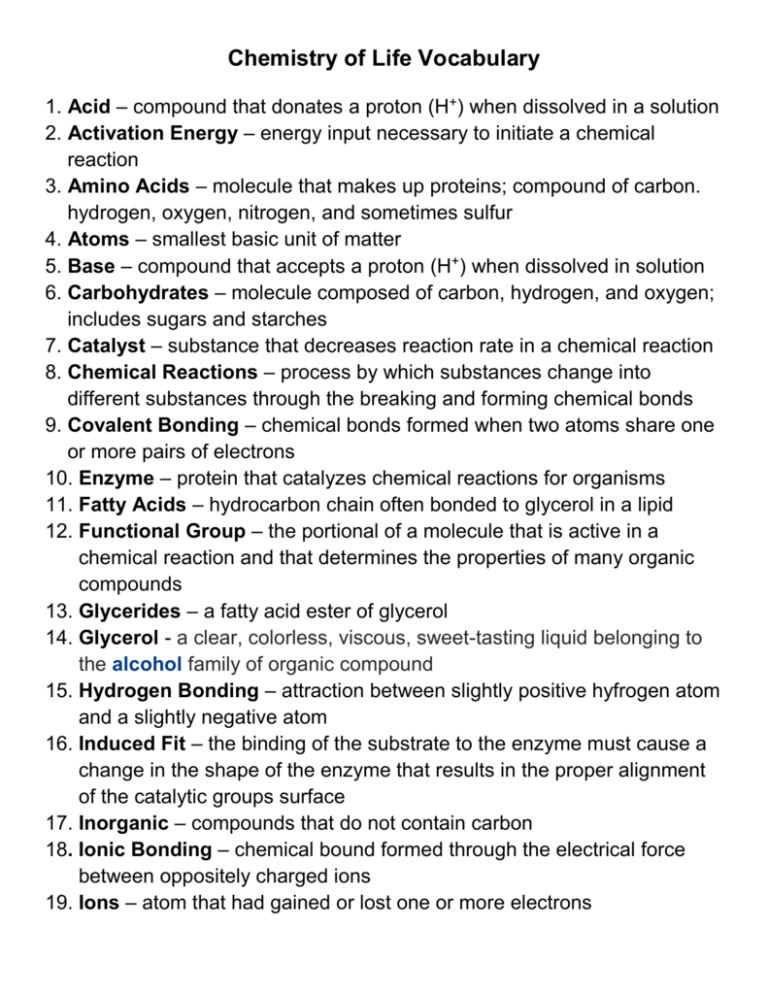
Chemistry of Life Vocabulary 1. Acid – compound that donates a proton (H+) when dissolved in a solution 2. Activation Energy – energy input necessary to initiate a chemical reaction 3. Amino Acids – molecule that makes up proteins; compound of carbon. hydrogen, oxygen, nitrogen, and sometimes sulfur 4. Atoms – smallest basic unit of matter 5. Base – compound that accepts a proton (H+) when dissolved in solution 6. Carbohydrates – molecule composed of carbon, hydrogen, and oxygen; includes sugars and starches 7. Catalyst – substance that decreases reaction rate in a chemical reaction 8. Chemical Reactions – process by which substances change into different substances through the breaking and forming chemical bonds 9. Covalent Bonding – chemical bonds formed when two atoms share one or more pairs of electrons 10. Enzyme – protein that catalyzes chemical reactions for organisms 11. Fatty Acids – hydrocarbon chain often bonded to glycerol in a lipid 12. Functional Group – the portional of a molecule that is active in a chemical reaction and that determines the properties of many organic compounds 13. Glycerides – a fatty acid ester of glycerol 14. Glycerol - a clear, colorless, viscous, sweet-tasting liquid belonging to the alcohol family of organic compound 15. Hydrogen Bonding – attraction between slightly positive hyfrogen atom and a slightly negative atom 16. Induced Fit – the binding of the substrate to the enzyme must cause a change in the shape of the enzyme that results in the proper alignment of the catalytic groups surface 17. Inorganic – compounds that do not contain carbon 18. Ionic Bonding – chemical bound formed through the electrical force between oppositely charged ions 19. Ions – atom that had gained or lost one or more electrons 20. Lipids – nonpolar molecule composed of carbon, hydrogen, and oxygen; includes fats and oils 21. Lock and Key Theory – enzyme-substrate interaction suggesting the enzyme (lock) and the substrate (key) must fit exactly into one another 22. Nucleic Acids – polymer of nucleotides; the genetic material of organisms 23. Nucleus – part of the atom composed of protons and neutrons 24. Organic – compound containing carbon 25. Peptides – a molecule consisting of two or more amino acids 26. pH – measurement of acidity; related to free hydrogen ion concentration in solution 27. Products – substance formed by a chemical reaction 28. Proteins – polymer composed of amino acids linked by peptide bonds; folds into a particular structure depending on bonds between amino acids 29. Reactants – substance that is changed by a chemical reaction 30. Substrate – reactant in a chemical reaction upon which an enzymes acts
